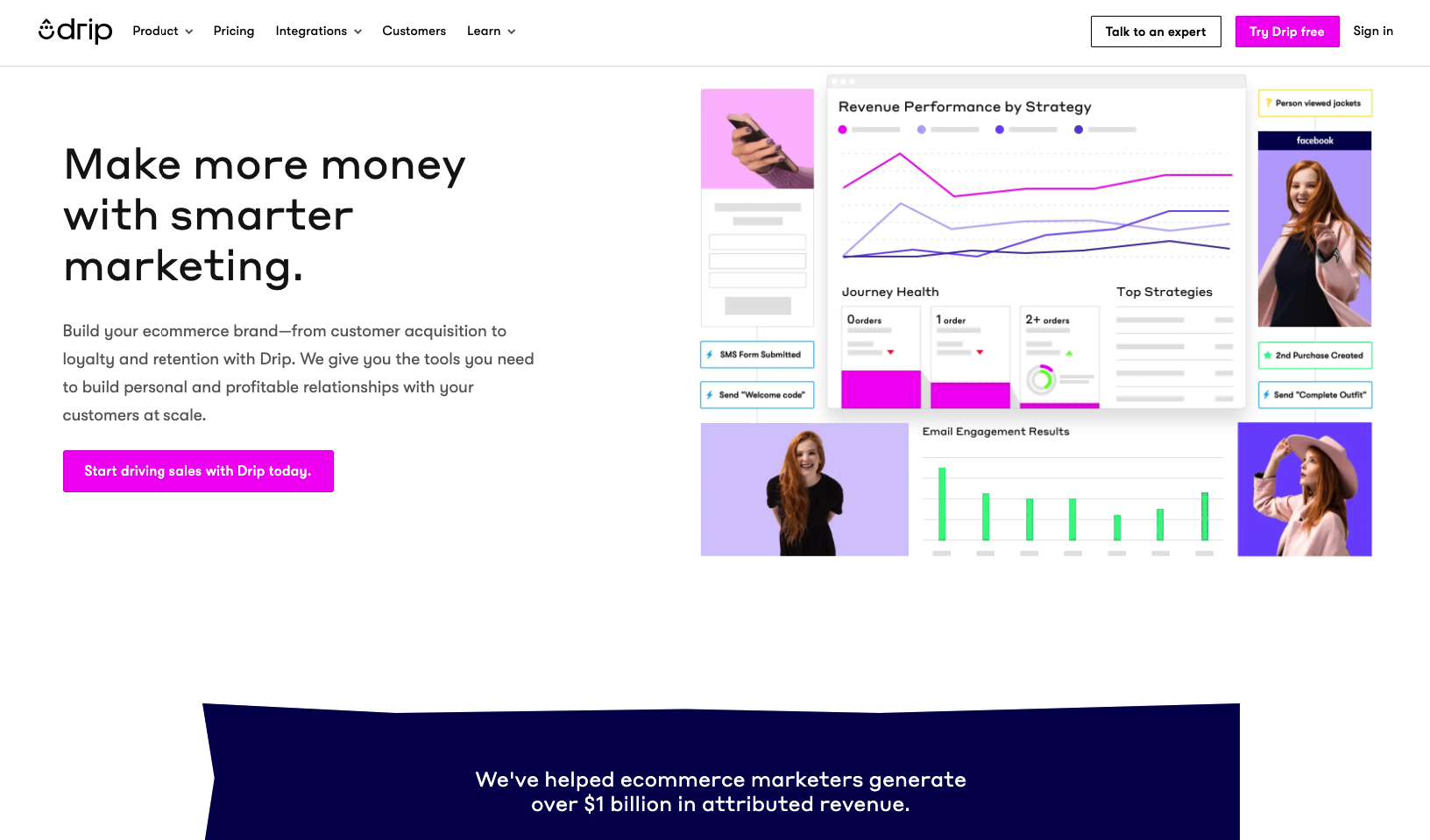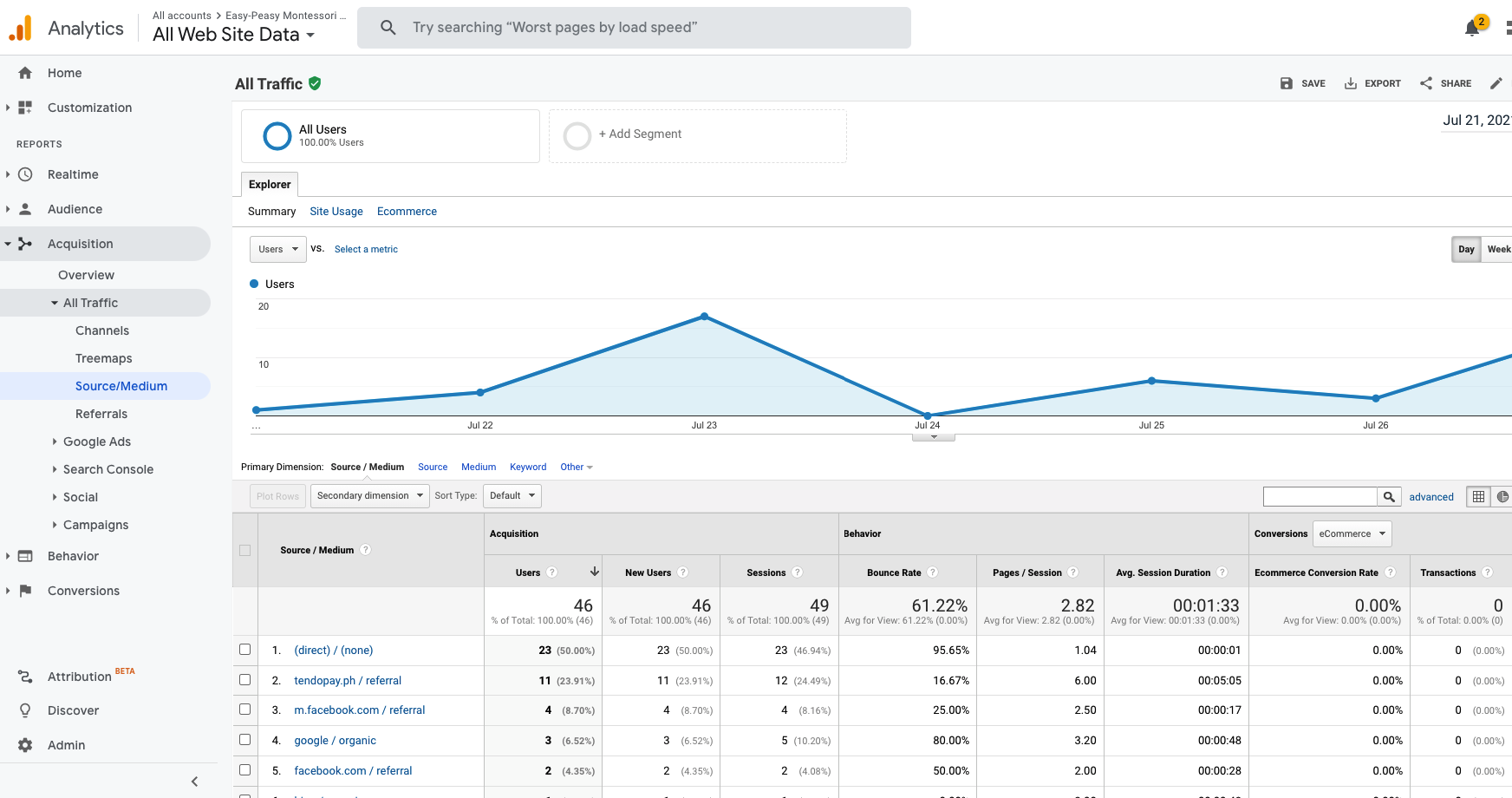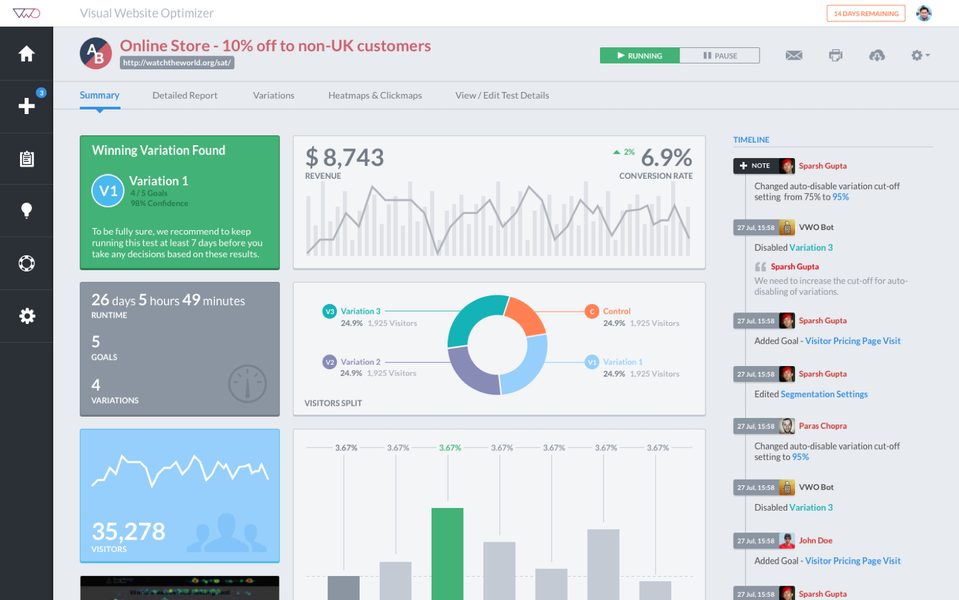Essential SaaS Tools For Your Website
Software-as-a-service (SaaS) is on-demand services available to use online. Instead of downloading and having to maintain software, SaaS offers a cost-effective way to access numerous services including file sharing, file storage and even media streaming.
You probably already use SaaS in your business without even realising it. Do you share files with others using Dropbox? Do you keep up with colleagues using Slack? Is Google Drive your go-to for project collaborations?
In this article, we’re going to tell you more about SaaS and the many ways you can adapt it to help you reach your business goals. We’ll discuss the benefits of SaaS, and recommend some tools you can use in your business. By the end of this article, you’ll be a SaaS specialist.
What is SaaS?
First thing’s first. What is SaaS? We’ve already mentioned SaaS stands for ‘software as a service’. But how does it work, exactly?
SaaS companies host applications and make them available to customers online. The SaaS model is known as on-demand, hosted or web-based software.
It used to be the case that businesses would have to pay to install or download the software themselves and then pay again to update this software as required. SaaS removes the need for this and offers a means for businesses to access services in a cost-effective way. It also means that the responsibility of security, availability and performance lies with the SaaS service providers rather than business owners.c
How Widespread is SaaS in Business?
SaaS, as we know it now, is a relatively recent phenomenon, but the SaaS model has been around since the 1960s. Back then, SaaS took the form of centralised data storage among other services.
The recent dramatic shift to remote work necessitated by the COVID-19 pandemic has accelerated the adoption of SaaS. BetterCloud’s 2017 State of the SaaS-Powered Workplace report forecast that by 2022, 78% of businesses will be ‘running purely on SaaS’. From our own experience here at Walter Analytics, SaaS is a vitally important tool to conducting our everyday business. Read on to find out more about the benefits of using SaaS in your business.
What are the Benefits of Using SaaS in Your Business?
There are numerous different SaaS available. From file sharing to networking, there’s very little SaaS can’t do. The benefits of using SaaS are as numerous as the SaaS themselves. In this section, we’ll outline just a few of the many benefits of embracing SaaS in your business.
Cost-Efficient
SaaS is a cost-efficient way of accessing services. Usually, you’ll pay a monthly or yearly subscription to a SaaS. This includes instant access to upgrades (more on that later). Even better – SaaS companies often offer free trials as well as flexible payment options. That way, you can pay and use SaaS in a way that works for you.
Accessible to Many
Accessing SaaS is as simple as ensuring you’ve got a decent internet connection. Because SaaS is available online, you can be based anywhere in the world and so can your team. Easy accessibility means you can work on the same project as someone across the globe from you, which means your recruitment talent pool just got a whole lot wider.
Instant Access to Software Upgrades
Paying for and downloading a software upgrade is a thing of the past with SaaS. SaaS users have instant access to software upgrades since this burden now lies with the SaaS provider. This also means time saved as you don’t have to disrupt normal business operations with a lengthy software update process.
Highly Scalable
SaaS grows with your business, so you don’t need to worry about having to switch to new software if you take on more staff. SaaS subscriptions can be adjusted quickly and easily so new team members can start using this software immediately.
5 SaaS Forecasts for 2021
We can expect great things from SaaS in 2021. From the adoption of more sophisticated AI to mobile-first UX, 2021 has big potential for SaaS.
1. More Sophisticated Artificial Intelligence
We should see an increase in the use of sophisticated AI in SaaS in 2021. AI offers the potential of increased cybersecurity, personalisation and automation. For example, companies can increase cyber threat detection rates using AI solutions.
How does this impact SaaS? By implementing AI in their software, SaaS companies can offer a more powerful, secure service and, by doing so, can expect to increase their growth and revenue.
2. Vertical SaaS
Vertical SaaS is a type of SaaS that’s created for a specific industry. Examples of industries where vertical SaaS is employed are retail, medicine and auto manufacturing.
Whereas horizontal SaaS focuses on clients across a wide array of industries, vertical SaaS is purpose-built for a specific industry. Because vertical SaaS is so niched it offers great potential for conversions and presents a key business opportunity for driven investors and developers. We predict 2021 holds the promise of better-quality vertical SaaS as the need for industry-specific cloud-based tools grows.
3. More Prominent Thought Leadership
Thought leadership is a term first used by the editor-in-chief of Strategy & Business magazine Joel Kurtzman to describe a person who is recognised by others as having a great understanding for the business they’re in.
To become a thought leader is to understand your business and, by extension, the needs of your customers. If SaaS companies are to succeed in an increasingly saturated market, they need to offer their customers more. They need to understand their industry and customers better. That’s why we predict thought leadership will take a more prominent role in SaaS in 2021 as more and more SaaS adapt to the market conditions.
4. Emergence of Micro-SaaS
Tyler Tringas, owner and lead developer of StoreMapper, defines micro-SaaS as “a SaaS business model targeting a niche market, run by one person or a very small team, with small costs, a narrow focus, a small but dedicated user base and no outside funding”.
We predict that 2021 will see the emergence of more micro-SaaS companies as SaaS developers try to find a way to innovate, offer value and connect with new customers in an increasingly saturated market.
5. Mobile-First UI
Mobiles are the medium of choice to access the internet with over 60% of website visitors accessing the internet from their phones, according to Inside Network. An article by Leftronic predicts that by 2025, over 72% of the world’s population will access the internet solely via their smartphones.
We predict 2021 will see an increased mobile-first mindset among SaaS companies as they try to offer a unique set of features and functionality that work across desktop and a range of mobile devices.
10 Essential SaaS Tools for Your Website
We hope you’ve learnt a little more about SaaS and are looking forward to some exciting developments in this industry over the next year. Now, we’re going to give you some recommendations for 10 great SaaS tools you should consider adopting in your business.
1. Hotjar - Conversion Rate Optimisation

Pricing – Paid starts at $39/month. Free plan available
Rather than guessing how your website visitors are using your platform, Hotjar offers detailed analysis of your visitors’ behaviour. Using this analysis, you can make necessary website improvements and look forward to increased website conversions.
2. SEMRush - SEO & Competitive Intelligence

Pricing – Starts at $99.95/month. Free 7-day trial available
SEMrush offers competitive intelligence and data analysis to help you optimise your online presence across all key channels. With more than 40 tools within the software, data for more than 140 countries, integration with Google and task management platforms, SEMrush is a great tool for digital marketers.
3. Drip - eCommerce

Pricing – Starts at $19/month. Free plan available
Drip is the world’s first eCommerce CRM platform designed to create a personalised automated customer experience. Some of the most exciting features are comprehensive tracking, hyper-segmentation, and email marketing automation.
URL: http://www.drip.com/
4. Optimizely - A/B Testing

Pricing – Starts at $50,000/year. No free plan available
Alongside Hotjar, Optimizely can help you increase conversion rates by allowing A/B or multivariate testing of your web pages across all devices. You can test the performance of multiple different website elements and make necessary improvements to help drive your business conversions.
5. VWO - A/B Testing

Pricing – Starts at $199/month. Free 30-day trial available.
VWO offers a range of tests for you to check and experiment on your website. VWO offers A/B and split testing, behavioural targeting, personalization, website reviews and heatmaps to help you improve your website conversion rates. VWO also comes with powerful reports that can be customised according to different scenarios.
URL: http://www.vwo.com/
6. Google Analytics - Website Analytics

Pricing – Free with paid plan available
The free version of Google Analytics allows you to view and compare all sorts of data metrics from your website, from performance to visitor type. Whilst other website analytics tools are available, Google Analytics is one of the best free tools. There is a paid plan available (Google Analytics 360) with even more detailed metrics that offer tier-based payment options.
7. Slack - Communications

Pricing – Starts at $8/month. Free plan available
With Slack, you can organise team communications by segmenting into topics or team projects. Slack also facilitates easy sharing of Google Drive files, PDFs, documents, or spreadsheets. The free plan is generous and offers 1:1 voice and video calls between team members.
8. Shopify - eCommerce

Pricing – Starts at $29/month. Free 14-day trial available
Setting up an online ecommerce store by yourself can be confusing and often needs expertise from developers and designers to make it work. Shopify reacted to this difficulty and created a platform to help you easily set up your online ecommerce store.
9. Salesforce - CRM

Pricing – Starts at $25/per user per month. No free plan available
Salesforce is known as the industry standard for Customer Relationship Management (CRM) software. Using Salesforce, you can easily track the entire sales cycle from one platform.
10. Zapier - Marketing Automation

Pricing – Starts at $19.99/month. Free plan available
Zapier automates your routine, time-consuming tasks by connecting apps and services. Zapier offers automation for a range of industries and even offers helpful guides on how to use its platform specific to your job role.
How Can I Apply This To My Business?
So, you’ve decided which SaaS is for you and you’re ready to take the plunge and sign up for an account or free trial with your chosen SaaS.
Before you do that, though, we recommend keeping the following things in mind:
Allow for Learning
You should allow time for your team to get used to the new SaaS. There may be some initial teething problems using this new technology, and you may even want to allow time for some training sessions to help make the transition smoother.
Enlist a Team
You may experience some resistance or frustration from your staff when introducing new tools for them to use. We recommend getting a team of keen staff onboard before signing up for any new tech. This team can trial the tech to brainstorm potential benefits and challenges to using your chosen SaaS before you roll it out to your whole team.
Stay in Contact
Even after you’ve committed to using a SaaS platform, stay in contact with your team. Is the platform working for them? Are there any issues you need to address with the platform provider? By keeping in contact with your SaaS team you can ensure the platform is useful and helps contribute in a meaningful way to the success of your business.
Conclusion
As businesses become ever more remote-based, SaaS is becoming increasingly popular. SaaS is a way to automate the data-driven tasks of your daily business operations and increase business profits. There are many affordable SaaS tools and platforms available to help make your business stronger, more effective and more focused. We hope this article has helped you understand more about SaaS and has given you some useful pointers on which SaaS platforms might work for you and your business.



